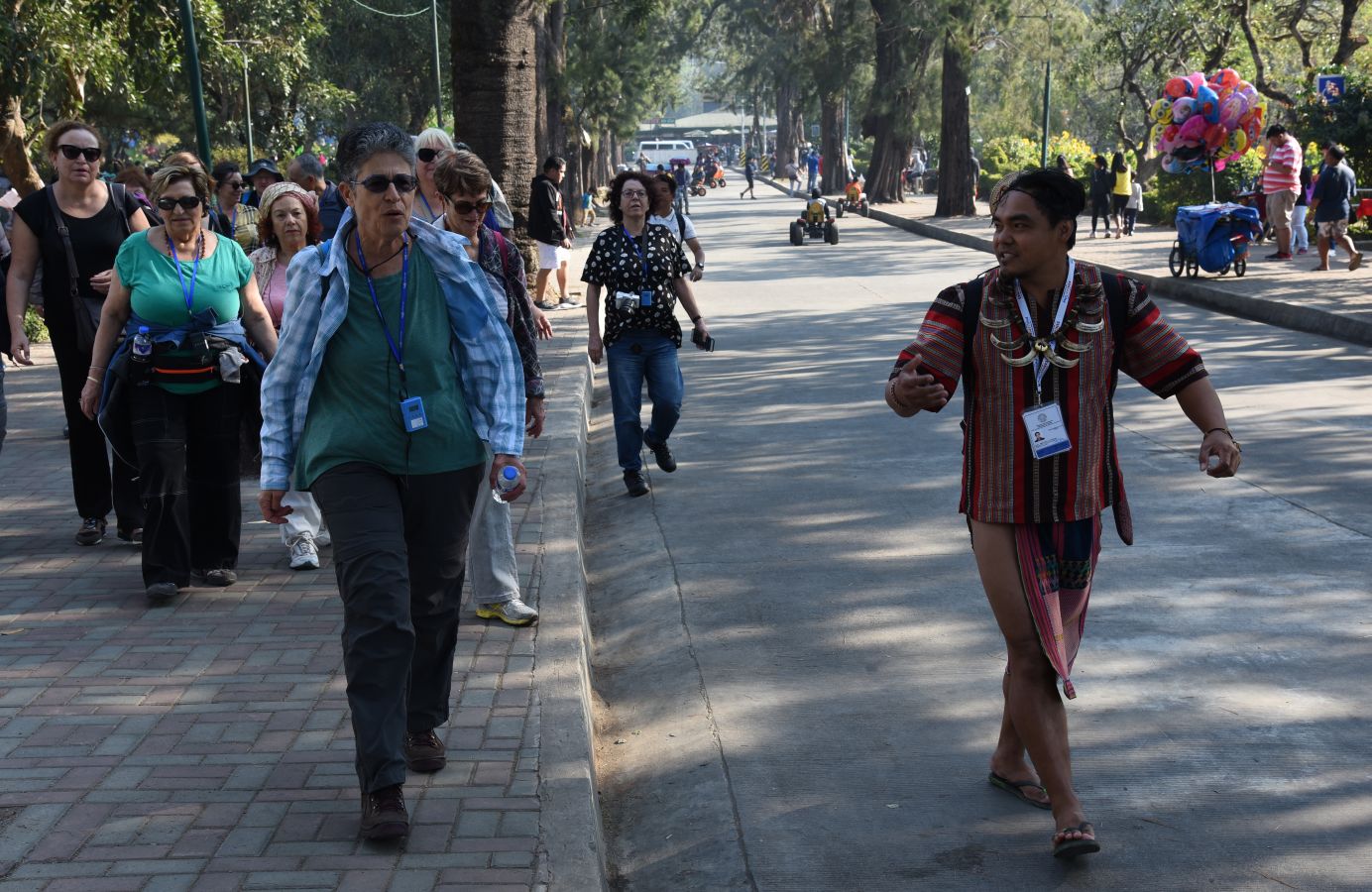Baguio City marks 9th Ibaloy Day with parade, rituals
BAGUIO CITY, Philippines —- Garbed in white g-strings or native blouses and skirts, close to a thousand Ibaloys danced to the beat of gongs along downtown Baguio on Saturday (Feb. 23), the 9th Ibaloy Day.
Baguio Ibaloys, and Ibaloys from neighboring Benguet towns, proceeded to the Ibaloy Heritage Park inside the almost a century-old Burnham Park, where elders performed a thanksgiving ritual called “Owik.”
The Saturday celebrations showcased Ibaloy culture. “If the Ibaloy will continue to inspire others by educating and raising awareness about our way of life, we will be able to reinforce the nation’s spirit of solidarity and we become a veritable instrument for nation building,” said Health Undersecretary Roget Tong-an, who is Ibaloy and the event’s guest speaker.

An Ibaloy woman joins the 9th Ibaloy Day parade on a horse on Saturday (Feb. 23). Photos by EV Espiritu
In October last year, the Komisyon sa Wikang Filipino (Commission on Filipino Languages) installed a 10-foot-tall steel marker at the Ibaloy Park, recognizing Ibaloy as a key Filipino language that needed to be preserved.
The city’s “Pony Boys,” intergenerational Ibaloy clans who breed and rent out horses to tourists, displayed their skills as master horsemen in a series of exhibitions there. Older Ibaloys have embraced elements of American cowboy culture.

Ibaloys perform a thanksgiving ritual called “Owik” on Saturday (Feb. 23), the 9th Ibaloy Day in Baguio City. Photo by EV Espiritu
Ibaloy Day was established, through a city council resolution on September 2009, to commemorate the American Supreme Court decision that recognizes the land rights of Ibaloy herdsman Mateo Cariño in 1909.
Now called the Cariño Doctrine, the ruling penned by United States Justice Oliver Wendell Holmes, legitimized the herdsman’s “Native Title” over pasture lands which became a military installation called Camp John Hay. Most of Baguio served a local cattle industry, which was pushed to the outskirts after the American colonial government built the summer capital.
The Cariño Doctrine is the foundation for the Indigenous Peoples Rights Act (Republic Act No. 8371).

Baguio tour guide Aries Rey Layugan wore a g-string when he showed Baguio City to a group of Israeli visitors on Saturday (Feb. 23). Photo by EV Espiritu














